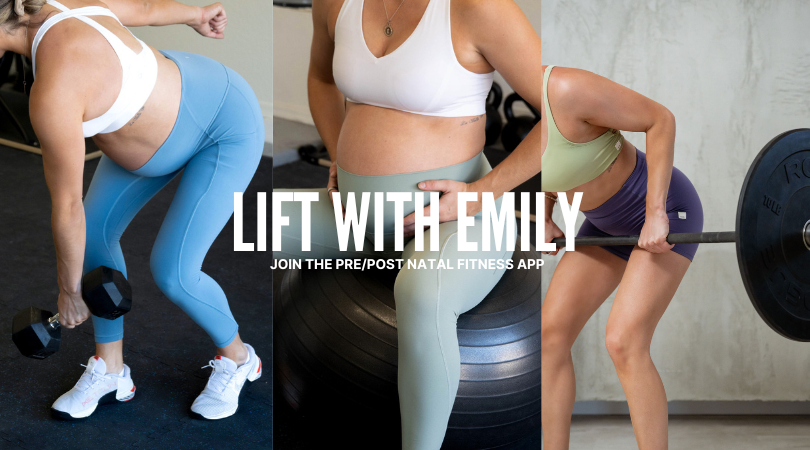
Baby wearing can be a lifesaver in the postpartum period, keeping your little one close while you go about your day. But if you’ve ever felt nagging low back pain after hours of carrying your baby, you’re not alone.
The postpartum body is already adjusting to core and pelvic floor changes, and prolonged baby wearing can exacerbate muscle imbalances, increase tension, and lead to discomfort in the low back. Whether you’re wearing your baby for short periods or all day, it’s important to address both mobility and strength to keep your body feeling good.
Below is a well-rounded approach to relieve tension, restore mobility, and strengthen key muscles to better support your body while baby wearing.
Mobility Exercises For Low Back Relief
🌀 Scorpion Stretch
• Why it helps: This stretch opens up the hip flexors and low back, relieving tension from prolonged standing or baby wearing.
• How to do it: Lie on your stomach with arms out to the side, lift one leg, and rotate it across your body while keeping your chest on the floor. Repeat on both sides.
🌀 Half-Kneeling Thoracic Rotation (Against a Wall)
• Why it helps: Baby wearing often leads to stiffness in the upper back. If your thoracic spine isn’t moving well, it can increase tension in the low back.
• How to do it: Kneel in front of a wall, option to add a medicine ball or foam roller against your outside knee to create stability. Extend your arms out in front of you, rotate your upper back away from the wall while keeping your lower body stable. Return to center before switching arms and rotating with the opposite side, sliding your arm across the wall. Alternate from side to side.
Strength Exercises for Postpartum Back Support
💪 QL Raise (Quadratus Lumborum Strengthening)
• Why it helps: The QL is a key stabilizer of the spine and pelvis. Strengthening it helps improve posture and reduces excessive strain on the low back.
• How to do it: Side lie on a 45 degree bench or elevated surface, lower your torso slightly reaching down towards the ground, and then lift using your obliques and lower back. If you do not have access to a bench, you can do this standing with a dumbbell and side bending.
💪 Back Extensions
• Why it helps: The erector spinae muscles along your back need to be strong to support bending, twisting, and overall posture while baby wearing.
• How to do it: Perform back extensions on a stability ball, bench, or the floor by engaging your core and slowly lifting your chest off the surface.
💪 Side Plank with Hip Abduction
• Why it helps: Strengthening the glute medius improves pelvic stability, which reduces strain on the low back. A weak glute med can contribute to compensation patterns that lead to pain.
• How to do it: Get into a side plank position and lift the top leg while keeping your hips stable. You can add a dumbbell to your hips like shown
Why Strength & Mobility Matter in Postpartum Recovery
Strengthening your core, glutes, and back muscles while improving mobility is essential for long-term postpartum recovery—especially if baby wearing is a daily part of your routine. Addressing both strength and flexibility ensures that your body can adapt and stay strong for the physical demands of motherhood.
Take the guesswork out of your postpartum workouts with the Strong in Motherhood membership on the LWE app. Try 7 days FREE today!

I’m deeply passionate about helping women feel strong, informed, and confident through every stage of motherhood. You deserve more than just a list of do’s and don’ts or generic modifications. With years of hands-on coaching across all kinds of athletes and clients, I blend real-world experience with specialized pre and postnatal knowledge to create strength programs that go far beyond basic adjustments. This is high-level, accessible training - built for your body, your season, and your goals
EXPLORE MORE POSTS